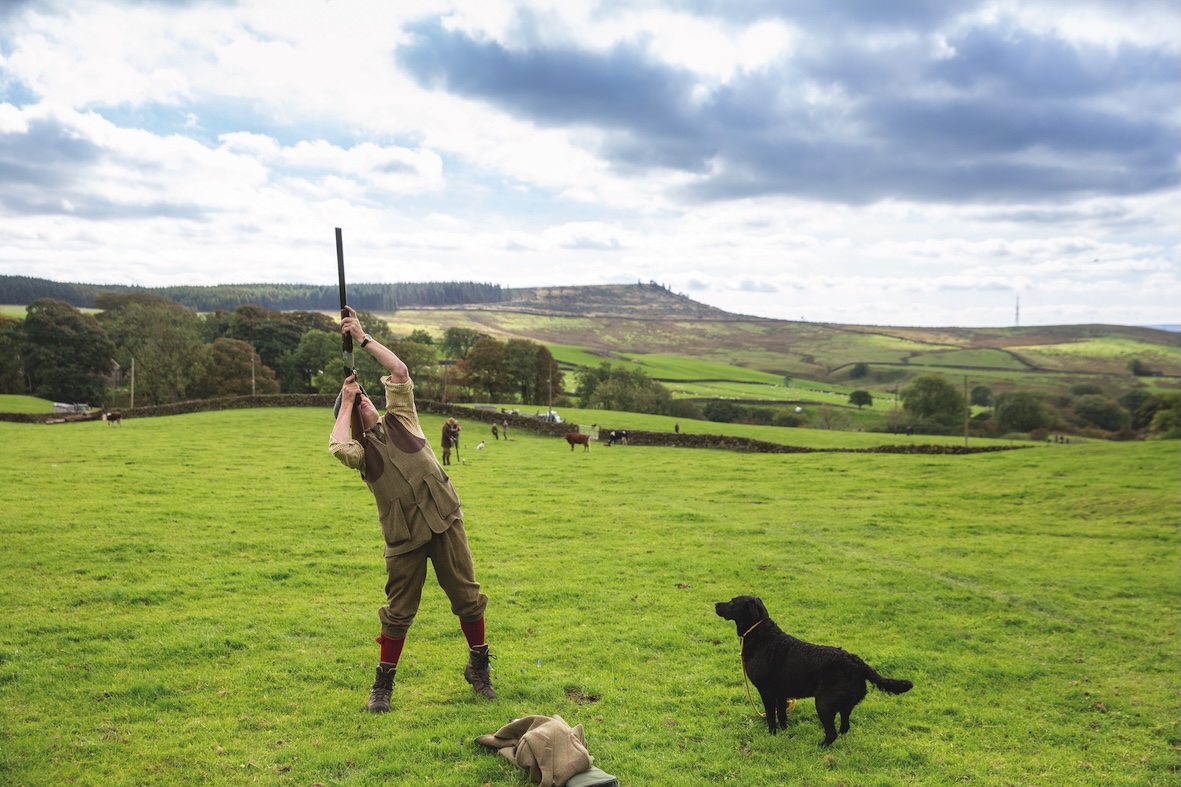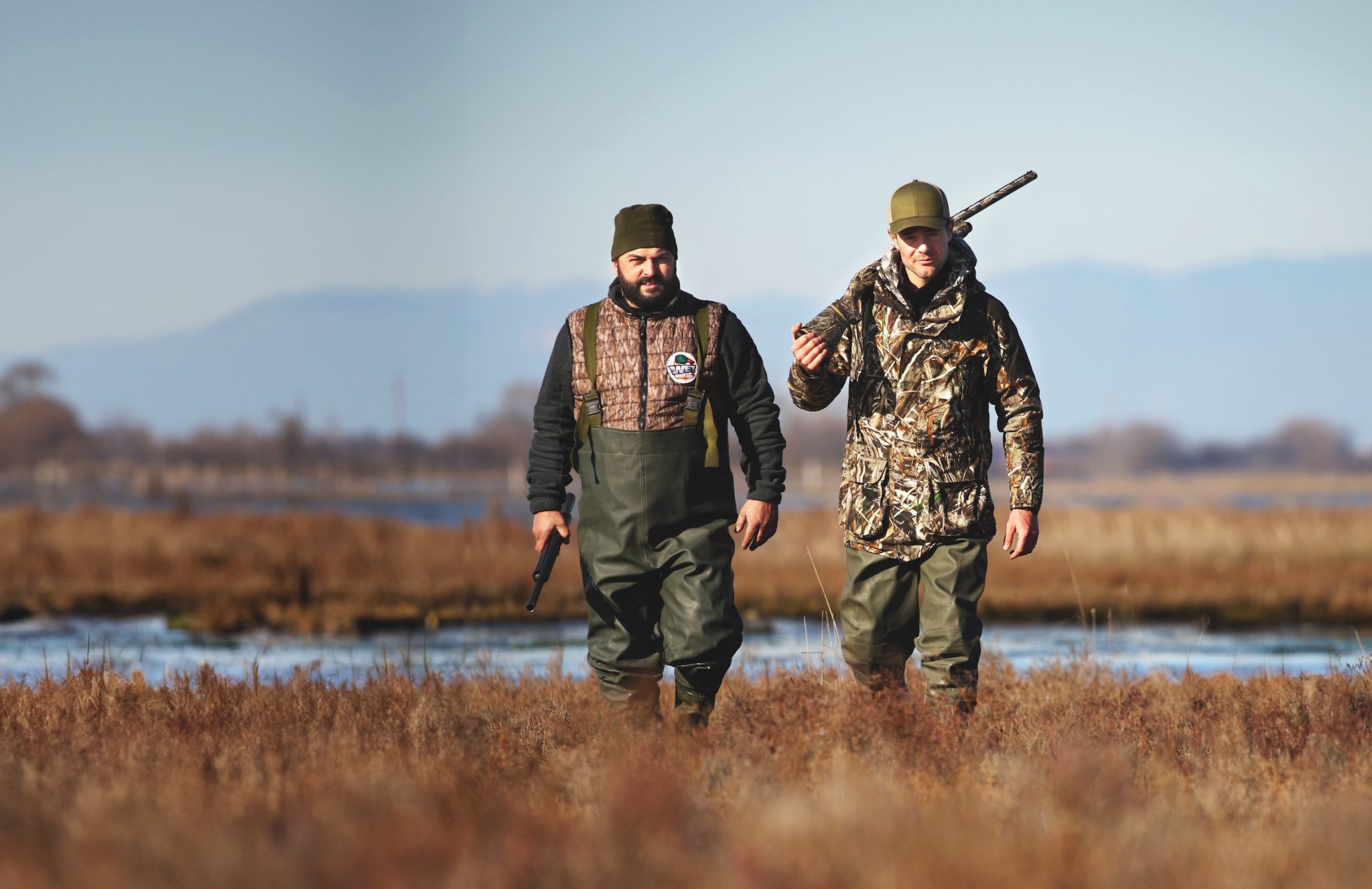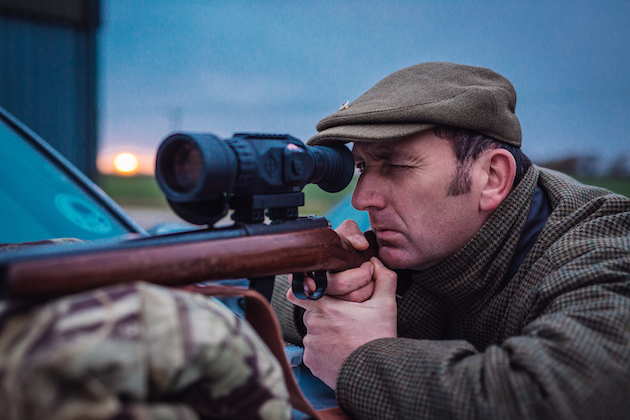Win CENS ProFlex DX5 earplugs worth £1,149 – enter here
Outwitting rats with scopes
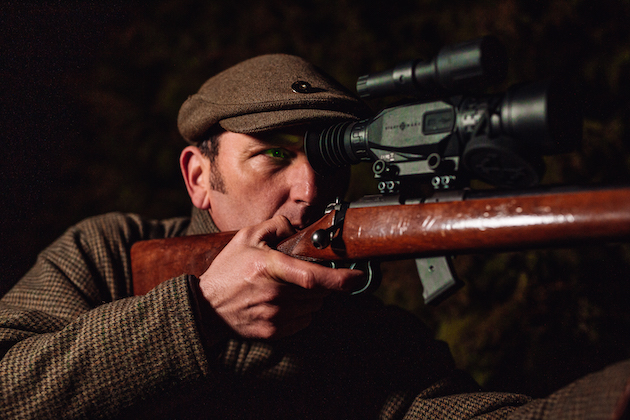 Rat shooting
Rat shooting
Brown rats are prolific and resilient opportunists. This is in no small way due to their intelligence. Rat brains are remarkably similar to humans’ in both structure and function. They learn through observation, response to stimulus and have a high-functioning memory. This means that while a few sessions of lamping, with a rifle or 20-bore, may be effective in the short term, rats soon become shy of the beam.
Shooting rats with scopes
With all this in mind we decided to outwit and control our rat population using darkness as our ally. For this we needed the aid of a digital scope. Scott Country kindly loaned us a Sightmark Wraith HD 4-32x digital day/night scope. We mounted this hi-tech kit on Richard’s trusted old CZ .22 rimfire using Picatinny mounts provided by Sportsmatch. In daytime, the scope provides an 8x magnification in colour. At night the Wraith works in conjunction with an infrared illuminator that sends out a beam up to 200m without the black-and-white image becoming grainy. For ratting, we were going to be shooting rats using scopes at a significantly shorter range.
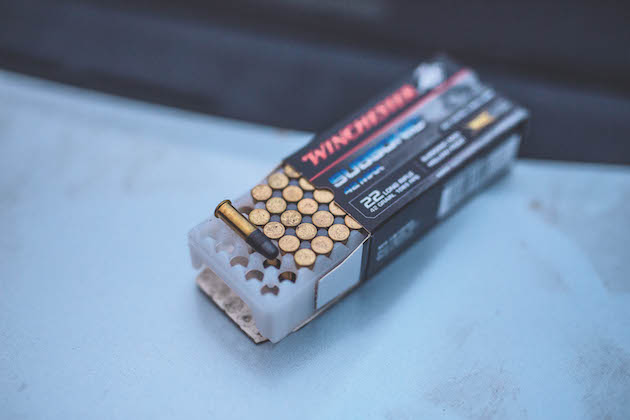
.22 ammo
We zeroed the Wraith at 30m, resting the scarred and scratched CZ atop a rolled-up jacket on the equally lacerated bonnet of my truck. Setting up the Wraith is user-friendly; zeroing was simplicity itself, with the information saved in the scope’s memory. Within 10 minutes of fitting the device on the rifle, Richard was punching a 5p-sized grouping of Winchester Subsonic 42 Max into the wooden target we had set up. All that was left now was to wait for dark.
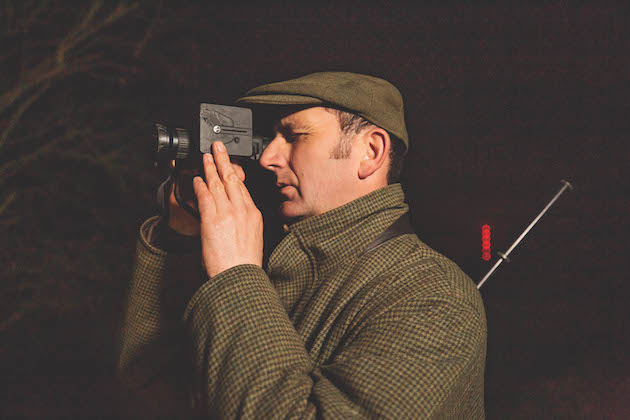
Richard peers through the thermal spotter, searching for the heat source of greedy rats
A sliver of moon made scarce appearances from behind patchy cloud cover, making for a truly dark night. The wind had gusted all day to the north-west. Wind and dark are prerequisites for successful night-time forays, as your quarry can neither see you nor hear you. We stalked quietly to the first feeder. Well-padded runs and pebble-smooth entrances to rat holes lay nearby, leading into a hedge and a clump of thuja. Richard raised the rifle to aim, supported on a hazel thumbstick I had cut earlier that morning — no hi-tech tripod required for this marksman at such close range.
Peering through a thermal monocular, I saw what had caught his attention. A number of glinting citrus-green heat sources glowed through the lens.
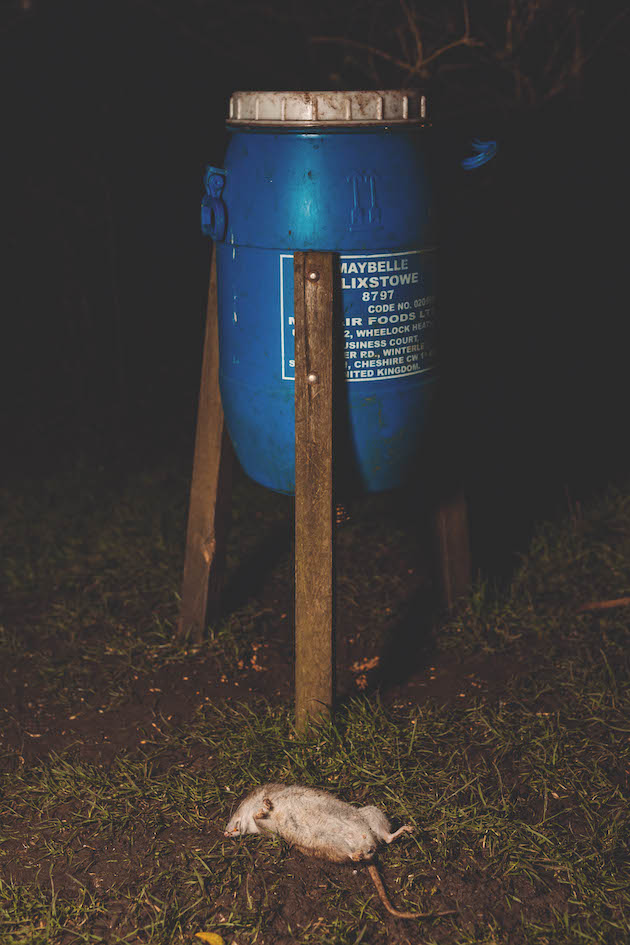
One down, taken close to one of the feeders
Thermal essential for night-time shooting
For stealthy lamp-free night-time shooting, the thermal is an essential tool, but it was impossible, through the monocular, to positively identify if these blobs were indeed rats or some other small mammal. Richard’s view through the Wraith, however, was unequivocally definite. A ‘phut’ from his moderated .22 sounded and the heat source I was watching made a small jump and then lay still. Richard held the rifle for me to look through. The monochrome image I saw reminded me of old war films and U-boat captains squinting through a periscope. A rat, its nerves causing a back leg to twitch, lay in stark clarity within the small field of view the scope allows. Soon, more shapes appeared in the thermal. The Wraith enabled Richard to confirm them as mice, their eyes reflecting like diamonds in the infrared beam of the illuminator. Then another larger, rat-like shape appeared. When viewed through the Wraith, all that was visible were the fronds of hedge. Another peek through the thermal confirmed that the rat was still there. We waited for it to creep out of cover, which it swiftly did, confident in the cloak of darkness — a 42-gr bullet ended its endeavours.
As the night wore on, Richard accounted for a further five rats and a rabbit at the feeder. The Wraith is a clever bit of kit. With regular use, the various functions it boasts, such as the 10 different reticle settings, recording facilities and zoom, will doubtless become second nature. However, in this initial trial, the small field of vision at close range made target acquisition challenging. Being digital, the scope lags when refocusing over a variety of ranges. In Richard’s opinion, while a new-generation thermal scope would be the blue riband for such work, an additional thermal monocular would still be required for scanning.
With the costs for such a thermal combination reaching many thousands of pounds, the Wraith, at a shade under £600, represents remarkable value for money. Most importantly, the Wraith lets you see in the dark, which is vital for target identification. A brooding hen partridge in the lee of the hedge and a foraging rat look identical in a thermal; not so with this digital scope. Richard’s ageing CZ has accounted for many thousands of pests over the years — mounted with the Wraith it became even more deadly.
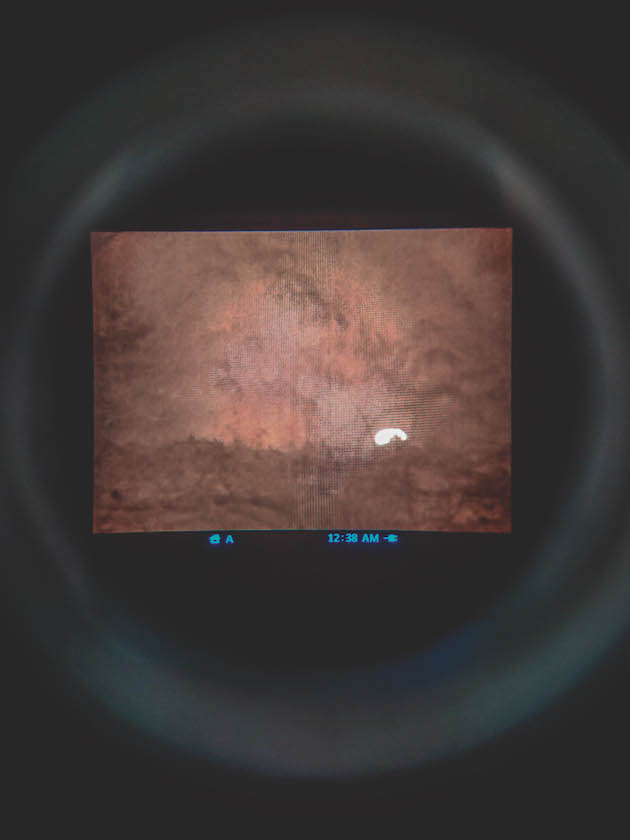
Small mammals can be clearly identified through the Wraith
Shooting rats using scopes
- Model Sightmark Wraith 4 HD
- Reticle 10 patterns
- Camera resolution 1920×1080
- Magnification 4-32x
- Objective lens 50mm
- Mount type Fixed Picatinny
- IR detection range 200m
- Battery Powered by 4 x AA batteries
- Battery life 4.5hr
- Weight 1,029g
- RRP £599.99
- Supplier Scott Country International
Related Articles
Get the latest news delivered direct to your door
Subscribe to Shooting Times & Country
Discover the ultimate companion for field sports enthusiasts with Shooting Times & Country Magazine, the UK’s leading weekly publication that has been at the forefront of shooting culture since 1882. Subscribers gain access to expert tips, comprehensive gear reviews, seasonal advice and a vibrant community of like-minded shooters.
Save on shop price when you subscribe with weekly issues featuring in-depth articles on gundog training, exclusive member offers and access to the digital back issue library. A Shooting Times & Country subscription is more than a magazine, don’t just read about the countryside; immerse yourself in its most authoritative and engaging publication.



